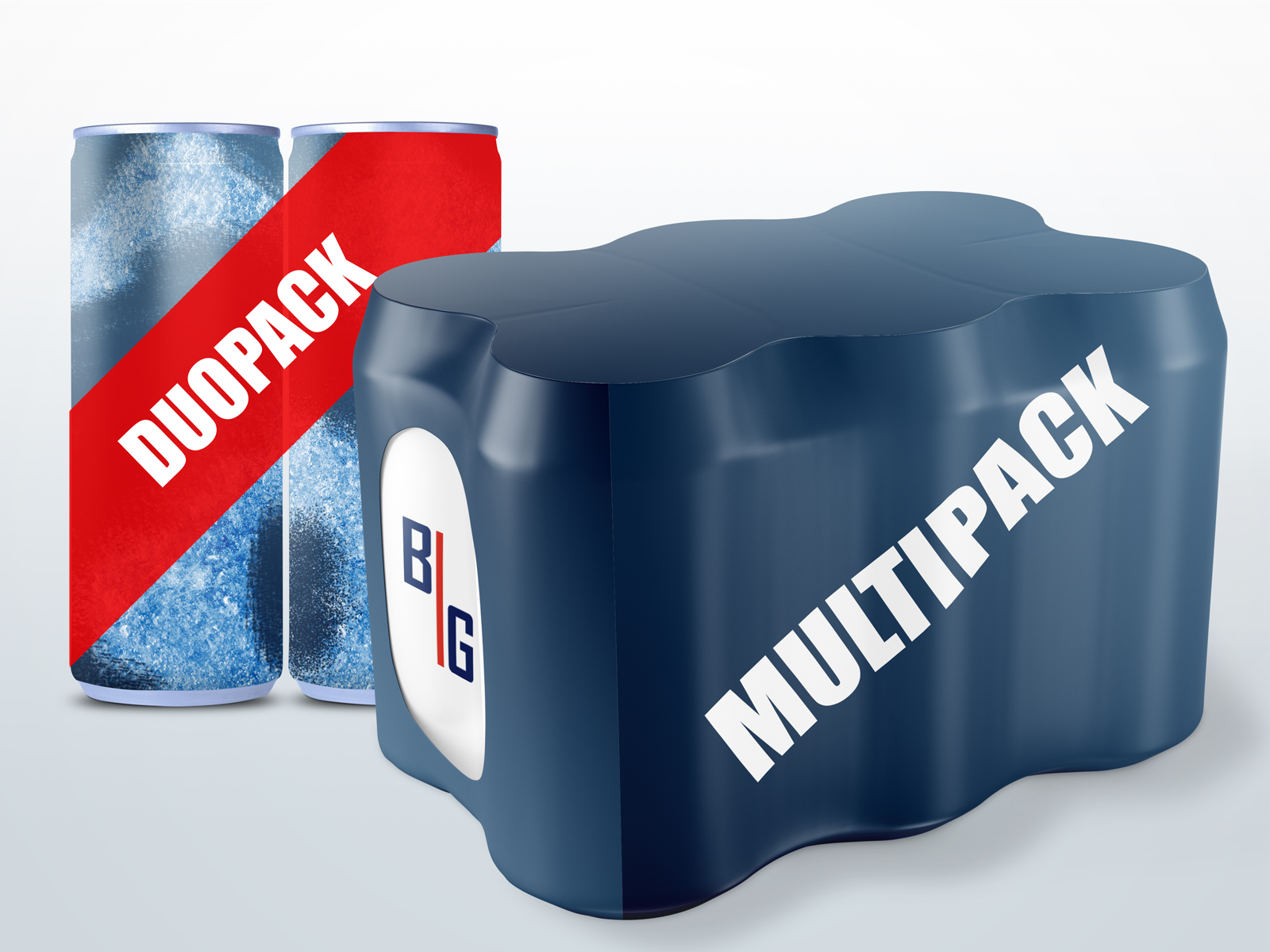
In an era of growing competition in the consumer products market, packaging no longer merely protects goods—it serves as a powerful sales, marketing, and logistical tool. Well-designed group packaging can significantly influence consumer purchasing decisions, enhance product visibility, and increase the value of shopping baskets. In this context, it’s beneficial to understand two popular approaches: duopack and multipack.
This article includes:
- A detailed comparison between duopack and multipack,
- An analysis of costs, logistics, and applications,
- A case study showing how implementing duopack increased sales by over 20%,
- Practical advice on choosing the right solution for specific scenarios.
What’s the Difference Between Duopack and Multipack?
Duopack Duopack is a form of group packaging combining two identical or complementary products into one set. It’s commonly used in promotional campaigns such as “2 for 1,” “new variant + classic,” or “travel kit.”
Popular technologies include:
- Shrink sleeve film,
- Cardboard sleeves and wraps,
- Plastic connectors.
Benefits of Duopack:
- Product differentiation on shelves.
- Full graphical customization (360° printing).
- Low initial production quantities.
- Ideal for seasonal promotions or limited editions.
Multipack Multipack refers to packaging containing three or more units, usually of the same type, sometimes in mixed forms. It’s common in wholesale, discount stores, and volume-driven campaigns.
Typical multipack formats:
- Cardboard trays with PE film,
- Shrink packs,
- Plastic bags or packs with mixed flavors.
Benefits of Multipack:
- Economies of scale (lower unit cost).
- Logistical efficiency.
- Compliance with retail chain requirements.
- Optimized palletization and transport.
Comparison Table
| Criterion | Duopack | Multipack |
|---|---|---|
| Number of Products | 2 | 3–12 |
| Goal | Promotion, novelty testing | Savings, wholesale, logistics |
| Industries | Cosmetics, chemicals, FMCG | Beverages, food, HORECA |
| Packaging | Sleeve film, cardboard | Shrink pack, tray, film |
| Production Volume | Low–Medium | Medium–High |
| EAN Code | Usually separate for each set | Separate or collective |
Duopack as a Sales Tool: Customer Case Study
Challenge A skincare product manufacturer was struggling with declining sales of its flagship shower gel. Despite favorable consumer reviews, the product faced intense price competition and low visibility in stores compared to rivals.
Solution: Promotional Duopack A duopack using transparent shrink sleeve film was designed, which:
- Combined two identical products,
- Included a “2 for 1” slogan and promotional graphics,
- Featured full 360° printing,
- Increased perceived value without altering the product.
Implementation Process
- Developing graphic design and marketing content.
- Producing shrink sleeve film using flexographic technology.
- Shrink and packaging testing.
- Delivering finished sleeves to packaging facilities.
Results After 3 months:
| Sales Indicator | Before Campaign | After Duopack Implementation |
| Monthly Product Sales | 22,000 units | 26,500 units |
| Visibility in Promotional Leaflets | None | Featured in 3 retail chains |
| Number of B2B Orders | 4 | 11 |
| Net Sales Increase | — | +20.4% |
Cost and Logistics Analysis
Duopack Costs:
- Sleeve design and printing: Higher unit cost, but low MOQ (from 10,000 units).
- Assembly: Manual or semi-automatic.
- Transport: Unchanged or slightly higher volume depending on packaging form.
Multipack Costs:
- Lower per-unit packaging cost at large volumes.
- Requires automated packing lines.
- Optimized logistics (better palletization, higher product density).
When Should You Choose Each Solution?
Duopack
- Quick promotion of a new product variant.
- Seasonal or limited-edition campaigns.
- Aesthetic appeal and premium effect.
- For impulse-buy products.
Multipack
- Permanent presence in retail chains.
- Low-margin, high-turnover products.
- Wholesale distribution and warehouse logistics.
- Discount and family-oriented offers.
Can Both Approaches be Combined? Yes. Hybrid strategies are increasingly popular:
- Multipacks containing several duopacks (e.g., two duopacks in a 4-pack multipack),
- Duopack sets packed into larger boxes. This allows flexibility in responding to local market needs, sales channels, and consumer behaviors.
Common Mistakes When Implementing Duopacks
- Overly complicated graphics obscuring promotional messages.
- Skipping shrink tests, resulting in ill-fitting sleeves.
- Unclear or hidden individual labels.
- Ignoring logistical compatibility (e.g., incompatibility with pallet storage).
- Not assigning a new EAN code for the pack.
FAQ
Does a duopack always boost sales?
Not always, but well-planned and integrated marketing campaigns significantly increase sales potential.
Must multipacks contain identical products?
No. They can include mixed flavors, variants, or brands.
Is shrink sleeve film for duopacks environmentally friendly?
Yes, PETG and PCR films are recyclable and comply with recycling standards.
Is a separate barcode necessary for duopacks?
Yes, duopacks are treated as individual sales units.
Is duopack suitable for e-commerce?
Yes, it works effectively as promotional items or order add-ons.
Duopack and multipack represent distinct strategies for group packaging, each with specific uses, costs, and advantages. Success lies in correctly aligning them with the product, marketing strategy, and distribution channels.
Our case study demonstrates that a well-designed duopack can increase sales by up to 20% without altering the product itself. It’s an effective tool combining design, functionality, and added value.